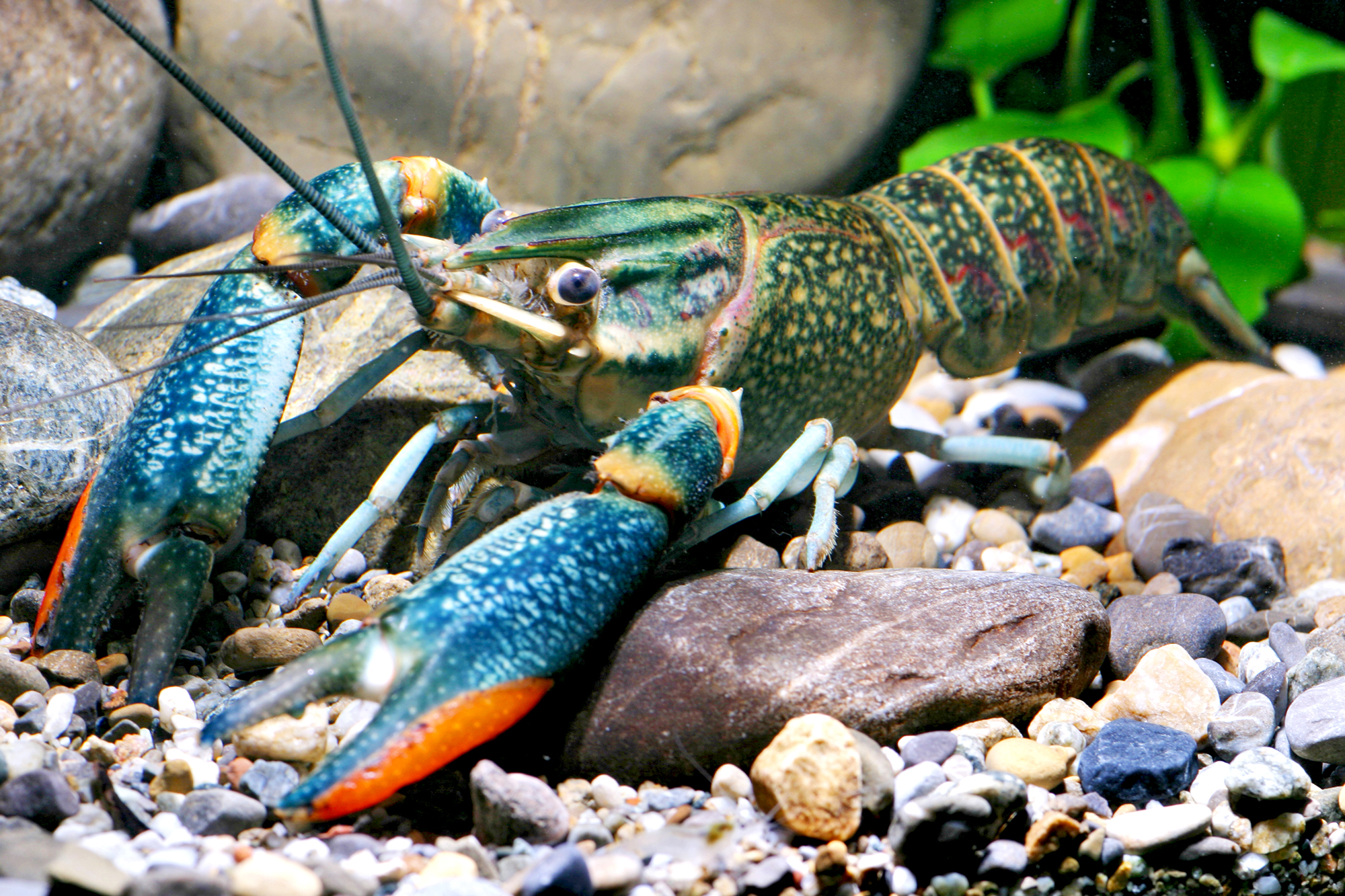Red Crab – Cherax quadricarinatus in detail Characteristics: Another Beginner Cancer is also the red shrimp crab or Cherax quadricarinatus as it is called by its Latin name. But beware if you consider his size, because the comrade can sometimes be 30cm and bigger. But since he is very peaceful, nothing stands in the way of socialization. But first things first.

General information about the red shrimp – Cherax quadricarinatus
This crab not only scores with its size, but also with its appearance. The red shrimp also exhibits an interesting behavior, which is why this species is very popular with aquarists. The homeland of the crab is Australia. Keeping them in the aquarium is possible for beginners. The expected age of the animals is about 2 to 5 years.
Appearance Red Crab – Cherax quadricarinatus
The red claw crab can grow up to 30 centimeters (without claws). The body color of the imposing animals is blue. The scissor legs may be colored orange at the joints. The carapace can be marked with whitish or yellow dots. Adult males have a red scissor bladder. This circumstance leads to the name of cancer. This feature makes it easy to tell males and females apart. Juveniles, on the other hand, can only be distinguished by their genital openings. In males, these are at the base of the fifth pair of legs, in females, on the other hand, on the third pair of legs.
Aquarium Requirements Red Crab – Cherax quadricarinatus
The edge length for keeping a pair of red shrimp should not be less than 100 centimeters. Since the crab is nocturnal, it is difficult to observe it during the day. It is only possible to see the animals at dusk.
There should be enough hiding places in the aquarium so that the animals can withdraw. These hiding places can easily be created with stones or roots. Especially at the moult hiding places are important so that the animals can avoid each other.
The tank can be planted with fast-growing and hardy plants. Especially soft plants are often nibbled on. Floating plants are also suitable as plants for an aquarium with red shrimp.
These animals feel particularly comfortable in alkaline water. The pH should be between 7,0 and 8,5. In the best case, the water temperature is 24 to 27 degrees Celsius. With this type, the total hardness of the water plays only a minor role and can therefore be neglected. However, there should definitely be enough oxygen in the water. The use of a bubble stone is therefore useful. Alternatively, the filter run can be raised so that the water splashes into the pool and thus enough oxygen gets into the pool. An oxidizer is also well suited to provide the water with enough oxygen.
Feed
The adult animals, in particular, usually have a vegetable diet. Nevertheless, even small protein snacks are not denied. Snails that do not reproduce are particularly suitable as live food. Growing red shrimp need more protein. It is therefore advisable to add suitable food about three or four times a week. Brown autumn leaves are particularly suitable as permanent food for the crabs. However, the animals can be fed just as well with crab food, vegetables, feed tabs, granulated feed or green fodder. Proteins can be given, for example, via live food, frozen food or special protein food.
behavior and socialization
The red shrimp can be socialized particularly well with small shrimp. A socialization with larger fish, such as Malawi cichlids, is also possible. Red shrimps are considered peaceful animals.
A socialization with large arm shrimp or fan shrimp should definitely be avoided. Also, other crabs or crabs are not a good idea for socialization. Young crabs in particular often eat shrimp, so these are also not suitable for socializing with young animals. Often the shrimp end up being a suitable protein snack.
Breeding Red Crab – Cherax quadricarinatus
Breeding red shrimp is relatively easy and uncomplicated.
After reproduction, the females usually carry around 150 to 300 eggs once a year, in some cases up to 1.400 eggs. In some cases it can breed up to five times a year. The gestation period is about 6 weeks. The hatched young crabs are highly cannibalistic. The parents also eat the young animals, so they should be separated after hatching. As many hiding places as possible should be created in the rearing tank and enough food should be offered.
Conclusion on the Red Crab – Cherax quadricarinatus
Let's take a look back at what distinguishes the red shrimp. Above all, his peaceful nature must be positively emphasized here. Also its quite unproblematic keeping, as long as you have a sufficiently large aquarium. All around these characteristics count among the novice crabs.





